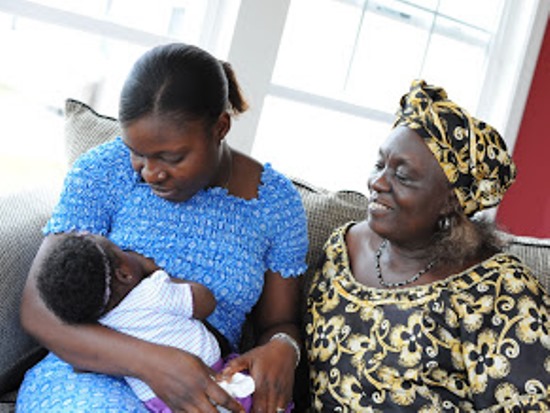 Breastfeeding
Breastfeeding
A breastfed baby may nurse every 1 to 3 hours. It is not uncommon for a breastfed baby to feed frequently in the evening. This is called cluster feeding. A breastfed baby will usually nurse more frequently than a formula-fed baby. Encourage your baby to stay on one side until the breast is emptied, typically at least 15-20 minutes, prior to offering the other side. It is not necessary to switch breasts at each feeding.
You can feed your baby when he or she shows signs of hunger; you do not need to use a clock to tell you when to feed your baby. Signs that your baby is hungry include:
- Smacking or licking lips
- Opening and closing mouth
- Sucking on lips, tongue, hands, fingers, toes, toys, or clothing
- Rooting around on the chest of whomever is carrying him or her
- Trying to position for nursing, either by lying back or pulling on your clothes
- Moving head side to side
- Fussing or crying
Care of your Breasts
Frequent nursing will provide the stimulation needed for a good milk supply. For sore nipples, you can rub a little milk or lanolin into your nipples after feeding then allow your nipples to air dry. You may choose to use disposable or washable breast pads if your breasts leak milk between feedings. Change these pads frequently. If you have excessive soreness or cracked nipples, call for help.
Usually, your milk will come in by the third day. If you are so full (engorged) that it is difficult for your baby to latch, hand-express just enough milk to soften the nipple for easier attachment. If you have difficulty getting baby to latch or if you are in pain, call your midwife. Flu-like symptoms, red tender bumps on your breast, or fever can be signs of an infection and you should inform your midwife.
Bottle-feeding
Bottle-fed babies need to eat every four hours. They should not go more than 6 hours between daytime feedings. By day three, you can feed 1 to 2 oz. per feeding. Newborns do not need to drink water. All babies should be burped after each feeding. However, some babies burp a lot, while others rarely need to. To burp, gently pat or rub your baby’s back while placed on your chest, over your shoulder, or on your lap, with head well-supported at the chin.


